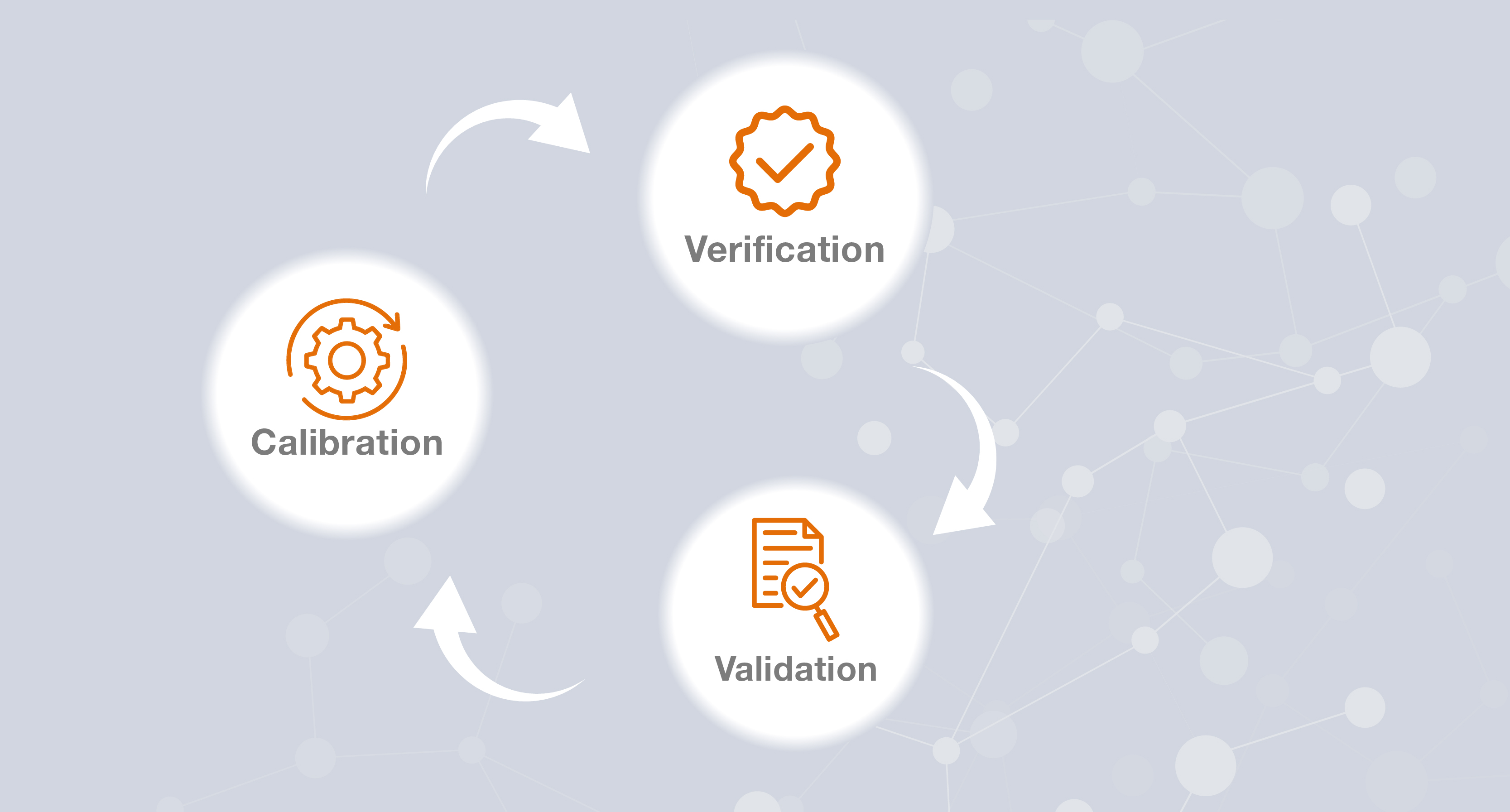In precision-driven industries such as pharmaceuticals, biotechnology, and life sciences, calibration, verification, and validation form the foundation of effective quality assurance. While often misunderstood or used interchangeably, each process serves a distinct role in ensuring measurement accuracy, operational reliability, and regulatory compliance. Understanding how they differ—and work together—is essential for maintaining consistency, safety, and efficiency across operations.
Calibration: Establishing Measurement Accuracy
Calibration involves comparing an instrument’s readings against a recognized reference standard and making adjustments as necessary to restore accuracy. These standards are traceable to accredited national or international metrology bodies, ensuring consistent and reliable results worldwide.
Routine calibration—whether scheduled or prompted by inconsistent results—prevents measurement drift from impacting critical processes. Standards such as ISO Guide 17025, GMP guidelines, and other equivalent global frameworks often govern this process.
Key benefits:
- Maintains measurement precision and process control.
- Detects and corrects drift early, prolonging equipment lifespan.
- Minimizes costly errors, waste, and non-conformities.
- Supports compliance with regulatory requirements.
- Ensures consistent product quality.
Verification: Confirming Ongoing Performance
Verification ensures equipment or processes remain within specified tolerances and continue meeting operational requirements—without making any adjustments. Acting as a quality checkpoint, it is commonly performed between calibrations to ensure stability.
Often conducted after calibration to confirm adjustments, or beforehand to identify the need for calibration, verification focuses on confirming acceptable performance for intended use.
Key benefits:
- Ensures operational consistency through routine performance checks.
- Identifies potential issues before they cause downtime.
- Maintains compliance with internal and external quality standards.
Validation: Confirming Intended Outcomes
Validation verifies that a complete system—comprising calibrated and verified components—works together to deliver results that consistently meet predefined requirements. While verification checks correct operation, validation ensures the output meets its intended purpose.
Regulators and clients frequently require validation to prove that processes function as designed. This process is typically guided by standards such as ISO 11134, ISO/IEC 17025, 21 CFR Part 11 and GMP requirements.
Key benefits:
- Enhances safety for both operators and end-users.
- Increases customer confidence by ensuring predictable, high-quality outcomes.
- Supports compliance with industry and regulatory frameworks.
- Reduces production errors and improves efficiency.
How Calibration, Verification, and Validation Work Together
Calibration establishes the accuracy baseline, verification ensures that baseline remains intact over time, and validation confirms that the complete system delivers the desired results. Traceability underpins each step, linking results to accredited reference standards. This ensures transparency, audit readiness, and adherence to regulatory and quality requirements.
Explore Kaye’s Product Solutions
Kaye offers a comprehensive range of calibration and validation equipment designed to meet the most demanding industrial requirements:
Partner with Kaye for Complete Confidence
For more than six decades, Kaye has set the industry benchmark for high-accuracy process measurement, serving as the trusted partner of choice for leading pharmaceutical and biotechnology companies worldwide. Our accreditations, including ISO/IEC 17025 and ISO 9001:2015, along with full GMP compliance, reflect our commitment to the highest quality standards.
With unmatched expertise, advanced technology, and a proven track record in calibration, verification, and validation, Kaye ensures precise results, regulatory compliance, and operational excellence for every project.
Contact us today to discuss your requirements or schedule a consultation.


